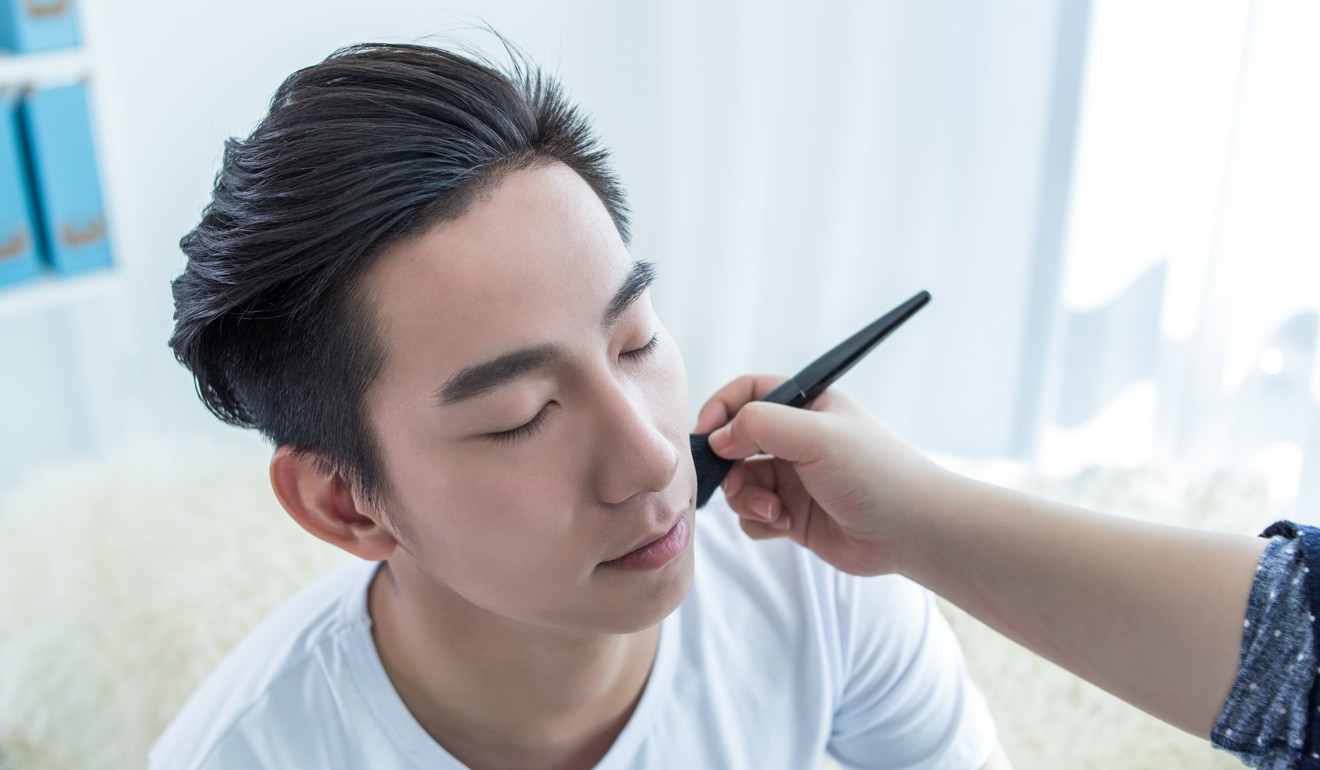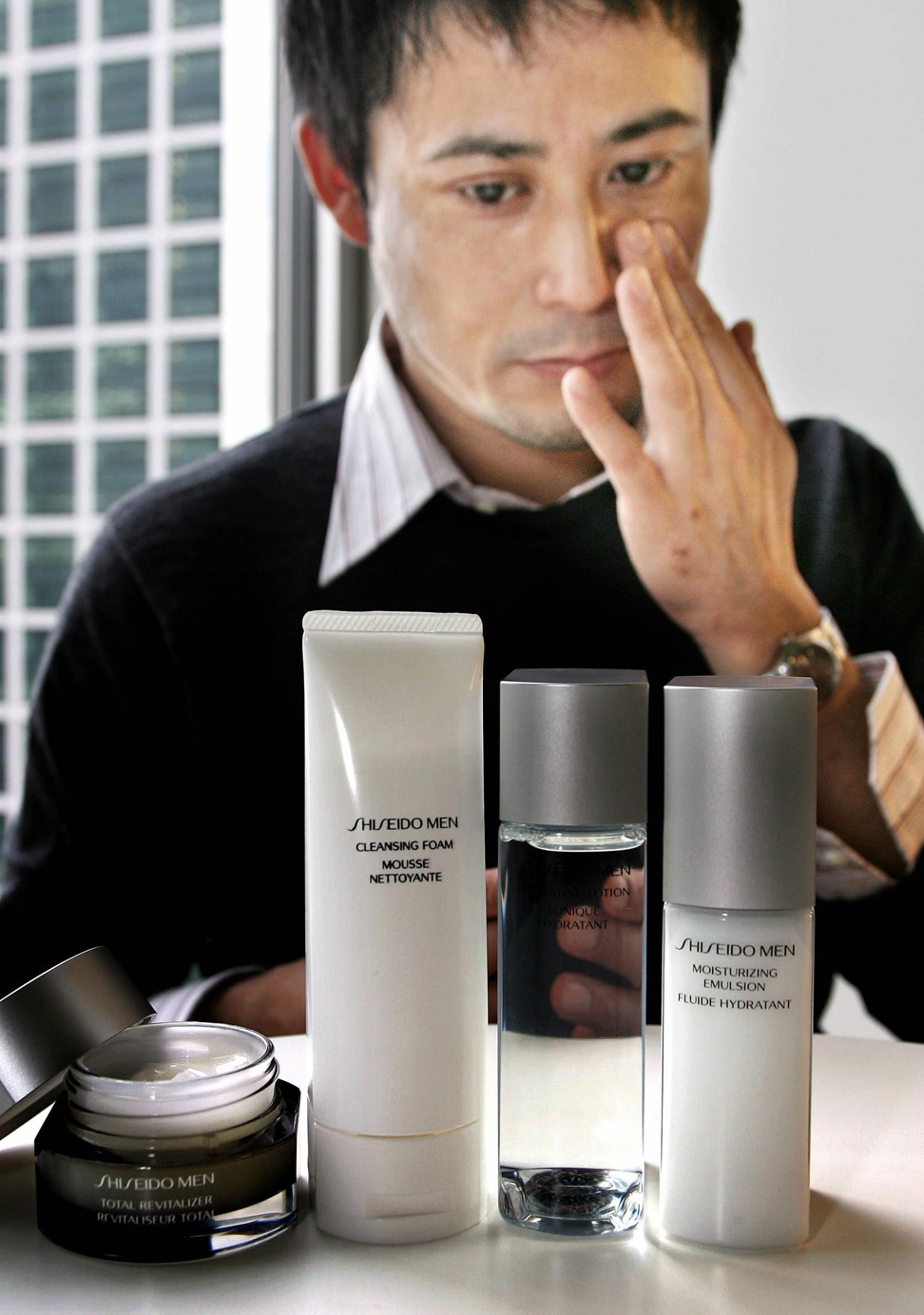Asia’s emerging men’s make-up market is now attracting some of the world’s biggest brands
- South Korea is an increasingly receptive market, thanks in part to the wildly popular K-pop bands
- However, China looms as the great litmus test – its overall beauty market was worth US$44.35 billion in 2018 and is expected to double by 2030

From an eye shadow that opens with the flick of a thumb, Zippo-style, to a barely-there foundation in subtle blue-grey packaging: men’s make-up is getting a makeover as manufacturers bid to take it more mainstream.
France’s Chanel and Japan’s Pola Orbis are among firms launching new ranges to exploit signs of rising demand for cosmetics among men, especially in Asia, betting the tide is finally turning in a segment that has long underwhelmed.
Beyond show business circles or the limited realm of beauty bloggers, the brands have other clients – such as image-conscious executives – in their sights, as they emphasise the undetectable aspects of some products.
“Giving off a sense of cleanliness is becoming a kind of business skill,” said Akira Gogo, president of Pola Orbis subsidiary Acro, which launched a men’s make-up range in September that includes foundation in 15 different skin tones given names like “Crispin” or “Joaquin”.
With some previous experiments in this field flopping, and dominant players such as France’s L’Oreal on the fence, it’s a gamble the companies are reticent to hype up too much.
“We don’t expect to see sales suddenly jump – we’re trying to create a new culture,” Gogo added.
But an increasingly receptive audience in markets such as South Korea – where wildly popular “K-pop” boy bands and their cute, flawless looks have helped redefine ideas of the comely male – points to growing potential for this niche.
Giving off a sense of cleanliness is becoming a kind of business skill
That is partly down to consumers such as Lee Ho-June, a 28-year-old who runs his own company as a fashion designer. He says he draws the line at a full face of make-up, unlike some acquaintances who paint their eyebrows, but has got used to using tinted moisturisers like BB creams – and visiting beauty stores with growing men’s counters.
“For me as a guy, it had been embarrassing and awkward to walk into a cosmetics shop,” Ho-June said, as he browsed with a female friend in downtown Seoul. “Now I enter a shop without hesitation.”
Asia’s male grooming market is still a relative minnow, accounting for under a fifth of the US$49.5 billion industry globally in 2017, according to data from market research firm Euromonitor.
Yet while business in other regions revolves around shaving products and deodorants, Asia already punches above its weight in men’s skincare, accounting for more than 60 per cent of worldwide sales in one of the industry’s fastest-growing segments.
Most cosmetics makers have made, at most, only tentative steps into men’s make-up.
L’Oreal, which featured a male model for the first time in a 2016 advertising campaign for a foundation, makes BB creams for men. So does Estee Lauder, under its male Lab Series brand, which recently also launched a colour-correcting moisturiser meant to mimic the effect of a photo filter.
But the US company’s Tom Ford ranges are among the only world-famous names in male make-up. Some others, including a line attempted in 2008 by French couturier Jean Paul Gaultier, were discontinued.

Tom Ford Beauty, which sells lipstick hues with names like “Alistair” and “Scott”, and men’s mud masks for US$60, declined to comment on its sales progress since entering the space in 2012.
Neither Chanel nor Acro disclosed how much they’d invested in the launches.
But the new entrants, with products priced at up to US$75 for a foundation in Chanel’s case, are banking that men will become more exacting as they develop beauty regimens, seeking out specific textures to cover their larger pores, for instance.
Chanel, known for its No. 5 perfume and fashion ranges, included matt lip balms and eyebrow pencils in shades such as grey in its new men’s make-up line called “Boy”.
“We are convinced that targeting men’s specific needs will lead the industry to real innovation in application techniques, in new products with multiple uses, and new formats,” Chanel said in emailed comments.
Its range had already attracted some interest at a Chanel store in Seoul in November, though male customers were scarce.
“It can be a great gift for men,” said Oh Min-Ji, 29, who said she shared some of her make-up with her younger brother but had found the idea of giving him women’s products “awkward”.
Acro has sought to make the products accessible to men by putting the accent on their application.
Chunky foundation bars can be applied with motions similar to using an electric razor, while the shape of others recall an e-cigarette than can be easily carried in a jacket pocket.

In South Korea, spending per head on men’s skincare – seen as a small leap away from using concealers and make-up – already beats other countries hands down, with consumers splurging more than 10 times more than their US or French peers, according to Euromonitor.
“The pressure to look youthful is very, very strong in South Korea. In jobs, you have to look like a 20-year-old – but have 20 years’ experience,” said Michael Nolte, creative director of cosmetics trend forecasting company BeautyStreams. “It’s a cultural thing too, boyish good looks are in.”
That brings opportunities, but also some hurdles, for the brands in a fiercely innovative and competitive local cosmetics market where non-male specific make-up is already becoming popular with men.
The pressure to look youthful is very, very strong in South Korea
In the eight months to August, South Korea’s biggest online shopping site Gmarket recorded a 130 per cent jump from a year earlier in the sale of cosmetics to male customers, including mascara and lip tint.
Chanel brought out its “Boy” range in South Korea in September, and plans to land it in Asian, US and British stores in 2019. Acro has initially focused on stores and online sales in Japan, but sees South Korea and Thailand as potential entry points to the broader Asia market, which it plans to enter next year.
A key test for contenders in men’s make-up would be to eventually crack China. Its overall beauty market was worth an estimated €39 billion (US$44.35 billion) in 2018 and is expected to more than double by 2030, according to L’Oreal forecasts. Signs of interest from male shoppers are already appearing.
JD.com, China’s No 2 e-commerce company, said the number of male consumers buying make-up in the first 17 days of a special sale period in June this year had jumped 61 per cent from a year earlier. Popular skincare brands included LVMH’s Dior and Procter & Gamble’s Japanese label SK-II.
“It’s really starting to change,” said Shanghai-based TreeTree Wu, 26, a male cosmetics blogger with almost 270,000 followers on Chinese microblogging platform Sina Weibo, and avowed fan of Fenty Beauty, a brand launched by singer Rihanna alongside LVMH.
“It’s not just male stars but lots of young men are using make-up,” he added. “Regular ordinary people, students and others, who might at least be painting their eyebrows.”